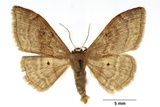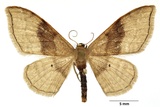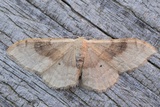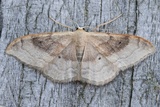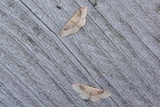Idaea degeneraria (Hübner, [1799]) Species
Last modified: Oct. 16, 2025, 6:06 p.m.
This very rare xerothermic species was discovered for the first time in Belgium in August 2007 in the most southern part of LX. It was one of the few species to be expected, because there are some small isolated populations in France not far from the Belgian border. It is widely distributed in southern Europe. Second observation was during 2016 at the coast at Koksijde.
Nowadays (2023) the species is found more frequently but it is still a very rare species.
Details
- Classification
- Family: Geometridae > Subfamily: Sterrhinae > Tribus: Sterrhini > Genus: Idaea > Species: Idaea degeneraria
- Vernacular names
- Bandstipspanner (NL), Portland Ribbon Wave (EN), L'Acidalie dégénérée (FR), Zweifarbiger Doppellinien-Zwergspanner (DE)
- First mention in Belgium
- De Prins W. 2016. Catalogus van de Belgische Lepidoptera – Catalogue of the Lepidoptera of Belgium. — Entomobrochure 9: 1–279. On page 169.
- Status
-
Native
Distribution
Bionomics
Hibernates as a larva and pupates in loose earth.
The adults are occasionally disturbed by day but usually seen at light.
Flight periods
The adults fly in one or two generations a year, occuring from early May towards late September.
Observed on
- Substrates:
- Dead leaves and Herbaceous plants
The polyphagous larva lives on various herbaceous plants, preferring dry and withered parts. Recorded on many plants, such as Convolvulus, Scabiosa, Veronica, Frangula, Galium, Rubus, Stellaria, Rumex, Plantago etc...
